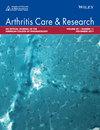Factors Associated With Adherence of Cervical Cancer Screening in Women With Systemic Lupus Erythematosus
Abstract
Objective
The objective is to determine cervical cancer screening rates and factors associated with decreased cervical cancer screening in women with systemic lupus erythematosus (SLE).
Methods
We conducted a cross-sectional study that enrolled consecutive women (age 21–64 years) with SLE. We collected demographics, clinical characteristics, constructs of the Health Beliefs Model (HBM) (ie, susceptibility, severity, barriers, benefits, cues to action, and self-efficacy), and self-reported cervical cancer screening (confirmed with the electronic medical record). The primary outcome was adherence to cervical cancer screening according to current guidelines. Multivariable logistic regression models were used to examine the association between SLE disease activity and cervical cancer screening and explore mediation effects from HBM constructs.
Results
We enrolled 130 women with SLE. The median age was 42 years (interquartile range 32–52 years). The cervical cancer screening adherence rate was 61.5%. Women with high SLE disease activity were less likely to have cervical cancer screening versus those with low disease activity (odds ratio 0.59, 95% confidence interval [CI] 0.39–0.89; P = 0.01), which remained statistically significant after adjusting for baseline demographics and drug therapy in a multivariable model (odds ratio 0.25, 95% CI 0.08–0.79; P = 0.02). Regarding the HBM constructs, increased perceived barriers to cervical cancer screening (r = −0.30, P < 0.01) and decreased self-efficacy (r = −0.21, P = 0.02) correlated with decreased cervical cancer screening.
Conclusion
Patients with SLE with high disease activity undergo cervical cancer screening less frequently than those with low disease activity. Perceived barriers to cervical cancer screening are moderately correlated with decreased screening. These data highlight the need to develop strategies to increase cervical cancer screening in this high-risk patient population.

 求助内容:
求助内容: 应助结果提醒方式:
应助结果提醒方式:


